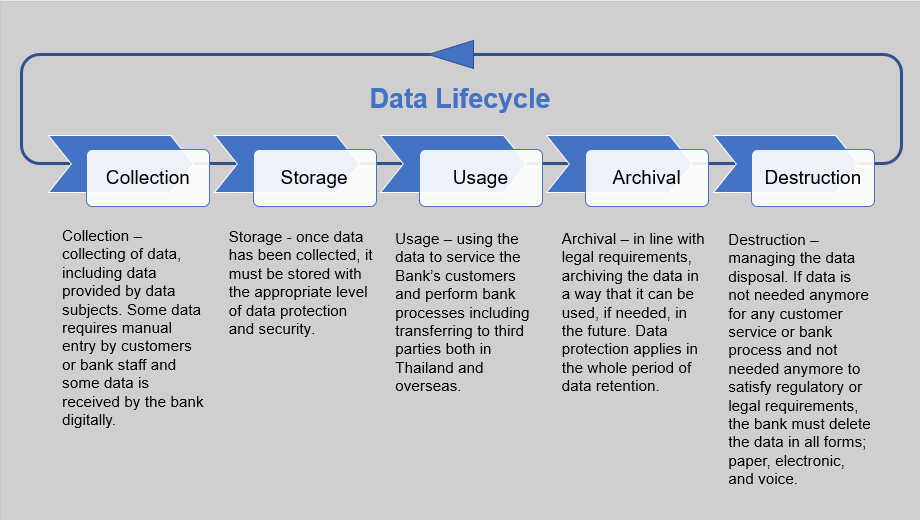How Robust Data Destruction Boosts Your Overall Cyber Security Steps
Discovering the Importance of Data Destruction in the Context of Computer System Security Services and Protecting Confidential Information
In an era where information violations are increasingly usual, the significance of efficient information devastation can not be overstated. What strategies can organizations implement to enhance their data devastation protocols?
Comprehending Data Damage
Information destruction is an important part of computer safety that entails the permanent elimination of information from storage space tools to prevent unauthorized gain access to and possible information violations. In an increasingly digital landscape, organizations deal with enhanced threats related to delicate information being improperly accessed or exploited. Efficient data damage safeguards against these dangers, making sure that personal dataâEUR" such as consumer info, copyright, and financial recordsâEUR" can not be recovered after disposal.
Comprehending the significance of data damage prolongs beyond mere compliance with governing and lawful structures; it is crucial for keeping business stability and depend on. When data is incorrectly managed or inadequately damaged, the effects can be extreme, consisting of monetary loss, reputational damage, and legal responsibilities.

Approaches of Information Elimination

One widespread approach is information cleaning, which entails overwriting existing data with random patterns several times. This method makes the initial information irretrievable, making it a prominent selection for companies looking for to shield personal details.
An additional approach is degaussing, which makes use of an effective electromagnetic field to interfere with the magnetic domain names on storage space gadgets, successfully eliminating the information. This technique is especially efficient for magnetic media however is not suitable to solid-state drives.
Physical damage is another durable approach, squashing or including the shredding of storage devices. This approach warranties that data recovery is virtually difficult, making it ideal for very delicate info.
Lastly, security can work as a complementary approach to information elimination. By encrypting data before removal, companies can add an added layer of safety, making sure that even if residues are recuperated, they remain inaccessible without the decryption secret. Each approach should be picked based upon the level of information level of sensitivity and the certain safety demands of the organization.
Legal Conformity and Data Safety
Organizations must browse a complicated landscape of lawful demands associated with information security, specifically after executing methods of data elimination. Various laws, such as the General Data Security Regulation (GDPR) and the Medical Insurance Mobility and Accountability Act (HIPAA), enforce stringent standards on how companies must get rid of and handle of delicate information. Failure useful site to follow these guidelines can lead to significant legal consequences, consisting of substantial fines and reputational damages.
Information destruction processes need to be diligently documented to demonstrate compliance with suitable regulations and standards. This documentation not only functions as evidence of adherence to lawful commitments but likewise highlights a dedication to safeguarding sensitive details. Organizations should likewise establish clear policies relating to information retention and devastation timelines, ensuring that data is not held longer than necessary.

In addition, normal audits and analyses of information damage methods are vital to preserve compliance and adjust to advancing lawful frameworks (data destruction). By proactively dealing with legal needs, companies can alleviate dangers connected with data violations and demonstrate their commitment to information safety. Eventually, focusing on legal compliance in information damage processes is not simply a regulative obligation, but a basic element of a durable information security approach
Effect On Company Reputation
The online reputation of a company can be significantly influenced by its technique to data devastation and administration. imp source In today's digital landscape, where data breaches can take place anytime, the failure to effectively dispose of delicate info can result in extreme effects. Organizations that inadequately manage information damage risk revealing private client details, which not just violates personal privacy regulations yet likewise wears down trust amongst clients and stakeholders.
A ruined track record can result in reduced consumer commitment, as clients end up being reluctant to involve with a company that has actually shown negligence in securing their information. Adverse publicity surrounding a data breach can have a long lasting impact, as prospective consumers could be hindered by the regarded absence of security. This can lead to a direct decline in income and market share.
Furthermore, services that prioritize data damage as part of their safety and security technique can improve their credibility by showcasing their commitment to protecting sensitive information. By adopting stringent information monitoring techniques, companies can not only reduce risks but additionally place themselves as credible entities in their particular sectors, consequently strengthening their overall brand name photo.

Ideal Practices for Secure Disposal
Carrying out finest practices for safe and secure disposal of data is important for mitigating threats related to information breaches and ensuring conformity with privacy laws. Organizations must adopt a thorough data you can try this out disposal plan that details procedures for both physical and electronic information destruction.
For physical information storage space gadgets, such as tough drives, shredding or degaussing is suggested to avoid information recuperation. Furthermore, companies ought to keep a chain of custodianship documentation during the disposal procedure, ensuring responsibility and traceability of disposed items.
For digital information, using software that abides by sector standards for information cleaning is essential. This software program should overwrite existing data several times, making recuperation virtually impossible. It is additionally important to verify the efficiency of the information devastation process through audits or third-party assessments.
Training workers on safe disposal techniques adds another layer of safety, as human error can typically result in information exposure. Regularly upgrading and evaluating disposal policies makes sure placement with advancing guidelines and technical advancements. By implementing these best practices, organizations can considerably decrease the danger of unauthorized data access and enhance their overall data protection strategy.
Conclusion
Finally, information devastation is a basic facet of computer system safety solutions that guarantees the security of confidential information from unapproved accessibility. Carrying out efficient techniques of data eradication, sticking to lawful compliance, and recognizing the effect on organization track record are necessary components of a thorough information safety and security strategy. By taking on ideal methods for secure disposal, companies can promote count on with customers and secure sensitive information, eventually adding to an extra protected electronic landscape.
In an age where data violations are increasingly usual, the relevance of effective information destruction can not be overemphasized.Data devastation is a vital component of computer system safety and security that entails the permanent removal of data from storage space devices to stop unauthorized gain access to and potential data violations. Organizations ought to additionally establish clear plans regarding data retention and devastation timelines, guaranteeing that information is not held longer than necessary.
By proactively attending to lawful requirements, companies can mitigate dangers linked with data breaches and show their dedication to data safety (data destruction). Inevitably, prioritizing legal conformity in information devastation processes is not just a governing obligation, but an essential facet of a robust data safety and security approach